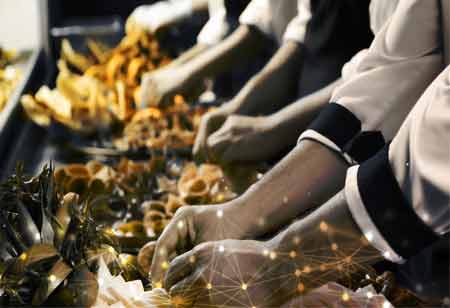THANK YOU FOR SUBSCRIBING
Be first to read the latest tech news, Industry Leader's Insights, and CIO interviews of medium and large enterprises exclusively from Food and Beverage Tech Review
Green Leaf Biomass a Sustainable Source of Protein
The consumption of plant-based proteins has increased recently, and the desire for nourishing, affordable, and sustainable sources of protein has grown along with the world's population.

By
Food and Beverages Tech Review | Tuesday, July 11, 2023
Stay ahead of the industry with exclusive feature stories on the top companies, expert insights and the latest news delivered straight to your inbox. Subscribe today.
The consumption of plant-based proteins has become popular in recent times, and the growing global population has increased the demand for nutritious, affordable, and sustainable sources of protein.
FREMONT, CA: The consumption of plant-based proteins has increased recently, and the desire for nourishing, affordable, and sustainable sources of protein has grown along with the world's population. Animal cell culture, bug protein, fermentation protein, and alternative plant protein sources are a few examples of new protein technologies. Plant protein sources such as fruit pomaces, discarded seeds, distiller's spent grains, pulp, peels, and green leaf biomass have all been investigated in the search to find novel protein sources. These goods, which come in concentrate, flour, and isolate forms, can also include other nutrients like fibre, bioactive substances, and carbohydrates. Before these new protein sources can be marketed, it must be determined whether they are nutritionally equivalent as well as how to extract nutrition while increasing yield and preserving the sources' functional characteristics.
Animal proteins have a higher protein content, and a higher amino acid score, are readily digestible, have a higher net product utilisation, and have a higher biological value than plant proteins, which make up the majority of the world's protein source. Despite having more polysaccharide fibres, sheet protein structures, and anti-digestive components than animal proteins, plant protein sources can be processed to have similar digestibility. Furthermore, new technologies to create protein sources with equivalent nutritional value and affordability are becoming important due to increasing concerns about the environmental effects and animal welfare issues related to animal meat production.
In vitro cell cultures of animal muscle and fat tissue are the primary method used to create minced or whole forms of protein that taste and feel similar to meat. Even though animal cell culture technology has advanced significantly, major biological and financial obstacles still exist. The nutritional content of animal cell culture products is also not yet equivalent because traditional sources of animal protein are supplemented with bioavailable vitamins and minerals. Algal and bug sources of protein can also be considered to be cultivated proteins. These proteins are an excellent source of each amino acid and can be produced sustainably in algal bioreactors. However, some kinds of algae have issues with low digestibility and ineffective protein extraction due to their rigid cell walls, alginates, and carrageenan.
Humans' evolved bitter and umami taste receptors are evidence that traditionally, people have eaten plant leaves. Furthermore, research on the extraction and nutritional equivalence of proteins from green biomass dates back to 1773. Green leaves that have been crudely processed contain five per cent leaf protein, and the protein content of some leaves is on pace with that of milk. Rubisco, a crucial component of carbon fixation during photosynthesis, makes up nearly 50 per cent of the soluble protein in green foliage. 10 per cent to 30 per cent of the total nitrogen in green foliage is also present in rubisco. Crude extraction, thermal and enzyme-assisted extractions, alkaline extraction, sonication or ultrasound-assisted extraction, electroporation, as well as heat and acid precipitation, are some techniques used to separate the proteins from green leaves.
The key functional characteristics that determine digestibility, texture, palatability, and nutrient bioavailability are those that define the various functional and nutritional profiles, the extraction strategy, and the various processing steps for the various types of green leaves. These consist of stability, frothing, emulsification, gelation, and solubility. Additionally, there are still problems with green leaf protein's amino acid composition, digestibility and the presence of antinutritional substances and secondary metabolites.
Proteins can be found in large and varied amounts in green foliage. To make it a viable alternative protein supply, however, the creation of affordable processing technologies, as well as nutrition and price parity, is necessary. While various green leaves have varying nutrient profiles and processing techniques, which makes it challenging to achieve this goal, it also offers opportunities to create specialised nutritional sources and targets specific dietary markets. Green leaf biomass has the potential to develop into a sizeable and sustainable supply of protein with improvements in extraction and processing technologies.
I agree We use cookies on this website to enhance your user experience. By clicking any link on this page you are giving your consent for us to set cookies. More info







